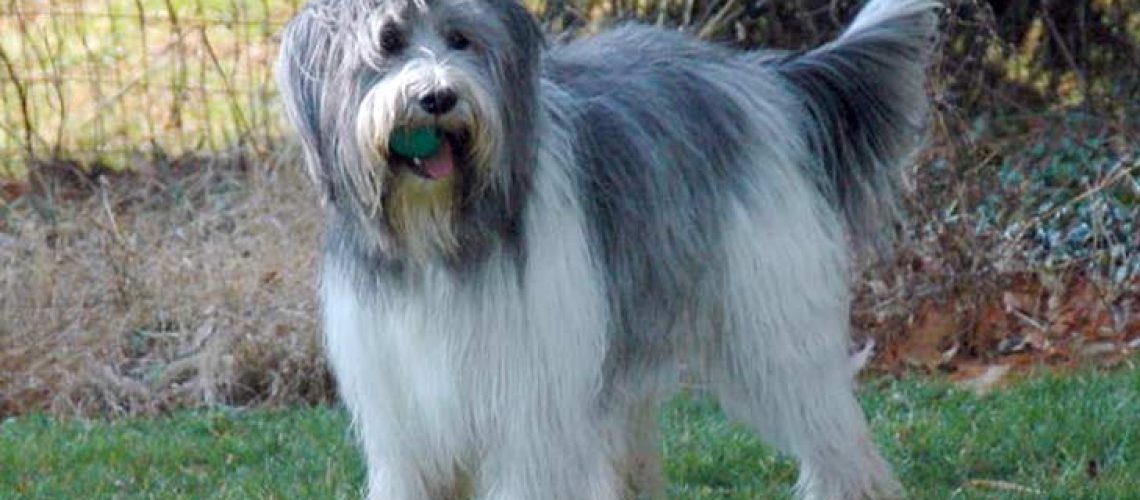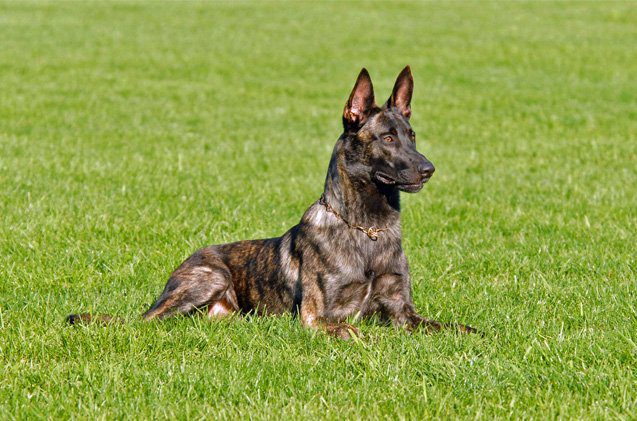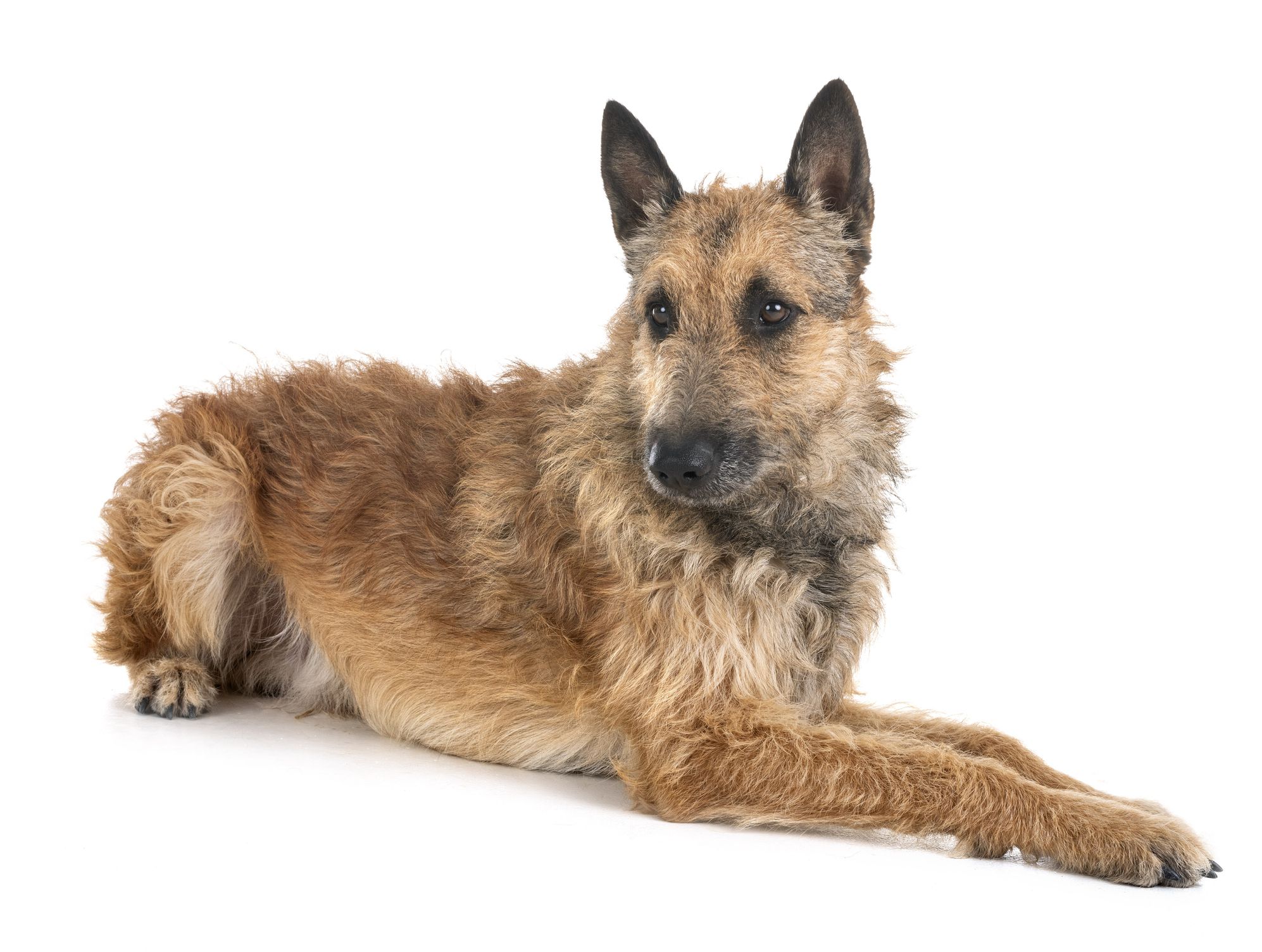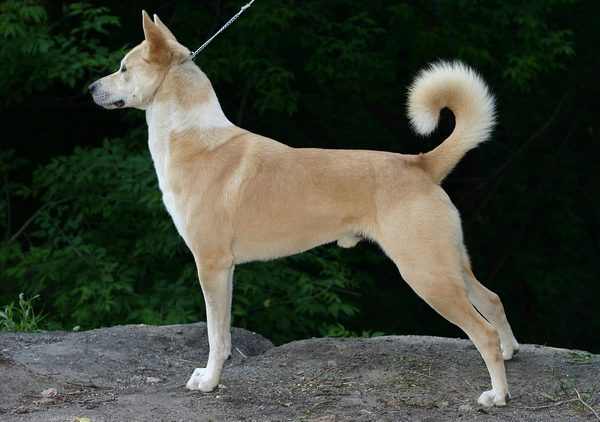Key Takeaways:
- The Schapendoes is a medium-sized dog breed that originated in the Netherlands and was traditionally used for herding sheep.
- This breed is known for its friendly and sociable nature, making it a great choice for families and households with other pets.
- Schapendoes have a thick, long coat that requires regular grooming to prevent matting and keep them looking their best.
- They are intelligent and active dogs that require mental stimulation and regular exercise to prevent boredom and destructive behaviors.
- Proper socialization from an early age is important for Schapendoes to ensure they grow up to be well-behaved and confident dogs.
Are you a dog lover who is always on the lookout for new and fascinating breeds? If so, then get ready to be captivated by the world of Schapendoes, also known as the Dutch Sheepdog. Exploring this subject will not only introduce you to an adorable and unique breed but also provide valuable insights into their characteristics and care. Understanding this topic is essential because it allows you to discover a breed that is not only intelligent and versatile but also incredibly loyal and affectionate. By delving into the world of Schapendoes, you will gain a deeper appreciation for these furry companions and learn how to provide them with the love and care they deserve. So, let's embark on this exciting journey together and uncover all there is to know about Schapendoes - your new favorite dog breed!
What is a Schapendoes and what makes it unique?
The Schapendoes is a medium-sized dog breed that originated in the Netherlands. They are known for their long, shaggy fur and friendly nature. What makes the Schapendoes unique is its herding instinct and intelligence. These dogs were originally bred to help farmers herd sheep, so they have a natural ability to control and guide animals.
One of the most distinctive features of the Schapendoes is its coat. Their fur is thick and curly, which helps protect them from harsh weather conditions. In cold weather, the dense fur keeps them warm by trapping air close to their body. This insulation helps them stay comfortable even in freezing temperatures. On the other hand, in hot weather, their fur acts as a natural sunscreen, protecting their skin from harmful UV rays.
How does the Schapendoes' fur protect it in different weather conditions?
The Schapendoes' fur plays an important role in protecting them from different weather conditions. In cold weather, their thick coat provides excellent insulation by trapping air close to their body. This helps keep them warm even in freezing temperatures. The dense curls of their fur also act as a barrier against wind and snow, preventing these elements from reaching their skin.
In hot weather, the Schapendoes' coat acts as a natural sunscreen. The long, shaggy fur creates shade for their skin and protects it from harmful UV rays. Additionally, the texture of their fur allows air to circulate between the strands, keeping them cool by promoting evaporation of sweat or moisture on their skin.
Overall, the Schapendoes' unique coat helps regulate their body temperature and keeps them comfortable in various weather conditions.
What is the personality of a Schapendoes like, and why is it important to know?
The Schapendoes has a friendly and outgoing personality. They are known for being loyal, intelligent, and eager to please their owners. These dogs form strong bonds with their families and enjoy being involved in all aspects of their lives. They are social animals and generally get along well with other pets and children.
Understanding the personality of a Schapendoes is important because it helps potential owners determine if this breed is suitable for their lifestyle. The Schapendoes thrives on human companionship and requires regular mental and physical stimulation to prevent boredom. They enjoy participating in various activities such as obedience training, agility courses, or even herding trials.
Additionally, knowing the breed's personality can help owners provide appropriate training and socialization from an early age. The Schapendoes' intelligence means they excel at learning new commands and tricks, but they can also become stubborn if not properly trained. With consistent positive reinforcement training methods, they can become well-behaved and obedient companions.
How much exercise does a Schapendoes need every day, and how can you keep them entertained?
The Schapendoes is an active breed that requires regular exercise to keep them happy and healthy. On average, they need about 60 minutes of exercise each day. This can be divided into multiple sessions of playtime, walks, or engaging activities that challenge their mind.
To keep a Schapendoes entertained, it's important to provide them with both physical and mental stimulation. Here are some ideas:
1. Daily walks: Take your Schapendoes for brisk walks or jogs to fulfill their exercise needs.
2. Interactive toys: Provide puzzle toys or treat-dispensing toys that require problem-solving skills.
3. Training sessions: Engage in obedience training or teach them new tricks to keep their minds sharp.
4. Playdates: Arrange playdates with other friendly dogs to provide social interaction and exercise.
5. Agility courses: Set up an agility course in your backyard or enroll them in agility classes to challenge their physical abilities.
6. Herding activities: If possible, engage them in herding trials or activities that tap into their natural instincts.
By incorporating these activities into their daily routine, you can ensure that your Schapendoes remains mentally stimulated and physically fit.
What are some common health problems that Schapendoes may have, and what can owners do about them?
Like all breeds, the Schapendoes is prone to certain health issues. It's important for owners to be aware of these conditions and take necessary precautions. Some common health problems in Schapendoes include:
1. Hip dysplasia: This is a genetic condition where the hip joint doesn't develop properly, leading to pain and mobility issues. Regular exercise, maintaining a healthy weight, and providing joint supplements can help manage this condition.
2. Progressive Retinal Atrophy (PRA): PRA is a degenerative eye disease that can lead to blindness. Regular veterinary check-ups and early detection through eye examinations can help monitor and manage this condition.
3. Epilepsy: Some Schapendoes may develop epilepsy, which causes seizures. Medications prescribed by a veterinarian can help control seizures and improve the dog's quality of life.
4. Hypothyroidism: This condition occurs when the thyroid gland doesn't produce enough hormones, resulting in various symptoms like weight gain and lethargy. Regular blood tests and medication prescribed by a veterinarian can help manage hypothyroidism.
Owners should work closely with their veterinarians to monitor their Schapendoes' health regularly through check-ups, vaccinations, proper nutrition, regular exercise, grooming practices, and providing a safe environment.
How should you groom a Schapendoes to keep their fur healthy and looking good?
Grooming a Schapendoes is essential to maintain the health and appearance of their fur. Here are some grooming tips:
1. Regular brushing: Use a slicker brush or comb to remove tangles and prevent matting. Brushing should be done at least 2-3 times a week to keep their coat in good condition.
2. Bathing: Bathe your Schapendoes every 6-8 weeks or as needed. Use a dog-specific shampoo and conditioner to keep their fur clean and soft.
3. Trimming: Trim the hair around their eyes, ears, and paws regularly to prevent irritation or infections. You can also consider professional grooming services for more intricate trimming.
4. Nail care: Trim your Schapendoes' nails regularly to prevent them from becoming too long or causing discomfort while walking.
5. Dental hygiene: Brush their teeth regularly using dog-friendly toothpaste and provide dental chews or toys to promote good oral health.
6. Check ears and eyes: Regularly inspect their ears for signs of infection or excessive wax build-up, and gently wipe around their eyes with a damp cloth if necessary.
By following these grooming practices, you can ensure that your Schapendoes' fur remains healthy, free from mats, and looks its best.
Are there any special training techniques for Schapendoes considering their intelligence and energy levels?
Due to their intelligence and high energy levels, training a Schapendoes requires specific techniques that cater to their needs. Here are some tips:
1. Positive reinforcement: Use rewards such as treats, praise, or playtime as motivation during training sessions. This breed responds well to positive reinforcement rather than punishment-based methods.
2. Mental stimulation: Incorporate mental exercises into training routines by teaching new tricks or providing puzzle toys that require problem-solving skills.
3. Consistency and repetition: Be consistent with commands and training methods to avoid confusion. Repeat commands until they are understood and obeyed.
4. Socialization: Expose your Schapendoes to various environments, people, and animals from a young age to encourage proper social behavior.
5. Channel energy: Engage in activities that allow them to burn off excess energy, such as agility courses, herding activities, or interactive play sessions.
6. Advanced training: Once basic obedience is mastered, consider advanced training activities like scent work or agility competitions to challenge their intelligence further.
Remember that each dog is unique, so it's important to adapt training techniques based on their individual personality and learning style. Patience, consistency, and positive reinforcement will help you develop a well-behaved and happy Schapendoes.
What is a Schapendoes and what makes it unique?
Overview
The Schapendoes, also known as the Dutch Sheepdog, is a medium-sized dog breed that originated in the Netherlands. It is known for its shaggy coat and lively personality. The Schapendoes was originally bred to herd sheep, but it has also become a popular companion dog due to its friendly nature and intelligence.
Appearance
The Schapendoes has a distinctive appearance with its long, dense coat that covers its entire body, including its face. Its fur can come in various colors such as black, gray, or brown. This breed has a sturdy build with well-developed muscles, allowing it to be agile and quick on its feet.
Unique Qualities
One of the most unique features of the Schapendoes is its coat. The dense fur serves as protection against harsh weather conditions such as rain or snow. It acts as insulation by trapping air close to the body, keeping the dog warm in cold temperatures. Additionally, the fur helps protect the Schapendoes from sunburn during hot weather.
Another remarkable quality of this breed is their intelligence. They are highly trainable and excel in various activities such as obedience training and agility competitions. Their sharp minds allow them to quickly learn new commands and tasks.
Overall, the combination of their distinctive appearance, protective coat, and high intelligence make the Schapendoes a truly unique and captivating breed.
(Note: A diagram showcasing the different colors and characteristics of a Schapendoes could be included here using markdown mermaid syntax.)
How does the Schapendoes' fur protect it in different weather conditions?
The insulating properties of the Schapendoes' fur
The Schapendoes, with its thick and dense double coat, is well-equipped to handle various weather conditions. The outer layer of their fur acts as a protective shield against rain, snow, and wind. It helps to repel water and prevent it from reaching the skin. This outer layer also provides insulation by trapping air close to the body, creating a warm barrier that keeps the dog cozy even in cold temperatures. Additionally, the long hairs on their legs and tail act as natural boots and scarves, providing extra warmth.
The shedding process for temperature regulation
During warmer months, the Schapendoes sheds its undercoat to regulate body temperature. This shedding process allows for better airflow through their fur, preventing overheating. Shedding also helps remove any dead or damaged hair, keeping their coat healthy. However, it's important to note that regular grooming is necessary during this time to prevent matting and tangling of loose hairs.
Tips for maintaining the Schapendoes' fur in different weather:
- Brush your Schapendoes regularly to remove loose hair and prevent matting.
- Provide shelter or shade during hot weather to avoid overheating.
- Use a dog-friendly sunscreen on exposed areas if your Schapendoes spends extended periods in direct sunlight.
- Consider using a doggy raincoat or booties during wet weather to keep them dry and comfortable.
By understanding how the Schapendoes' fur protects them in different weather conditions, owners can ensure their beloved pets stay comfortable and healthy throughout the year.
What is the personality of a Schapendoes like, and why is it important to know?
A friendly and intelligent companion
The Schapendoes is known for its friendly and sociable nature. They are highly intelligent dogs that thrive on human companionship. Their playful and energetic personality makes them great family pets, as they enjoy interacting with children and other animals. Schapendoes are also quick learners, which makes training them a rewarding experience.
The importance of understanding their personality
Knowing the personality traits of a Schapendoes is crucial for potential owners to ensure a good match between the dog and their lifestyle. These dogs require mental stimulation and physical exercise to prevent boredom and destructive behavior. They thrive in an environment where they receive attention, love, and regular opportunities to engage in activities that challenge their intelligence.
Key characteristics of the Schapendoes' personality:
- Friendly and sociable
- Energetic and playful
- Intelligent and trainable
- Requires mental stimulation
Understanding the personality of a Schapendoes allows owners to provide the necessary care, training, and socialization required for a happy and well-adjusted dog.
(Note: The remaining subheadings will be expanded in subsequent responses.)
How much exercise does a Schapendoes need every day, and how can you keep them entertained?
Exercise Requirements
The Schapendoes is an active and energetic breed that requires a good amount of daily exercise to stay healthy and happy. Ideally, they should get at least 60 minutes of physical activity each day. This can include brisk walks, jogging, playing fetch, or participating in dog sports such as agility or obedience training. Regular exercise helps prevent obesity and keeps their muscles toned.
Keeping Them Entertained
In addition to physical exercise, it's important to provide mental stimulation for your Schapendoes. They are intelligent dogs that thrive on mental challenges. Consider incorporating puzzle toys, interactive games, and obedience training sessions into their routine. These activities not only keep them entertained but also help develop their problem-solving skills and strengthen the bond between you and your furry friend.
Engaging Toys for Mental Stimulation
To keep your Schapendoes mentally engaged, consider providing them with interactive toys such as treat-dispensing puzzles or hide-and-seek games. These toys require the dog to use their problem-solving abilities to access treats or find hidden objects. Additionally, rotating their toy selection regularly will prevent boredom and maintain their interest.
- Treat-dispensing puzzle toys
- Hide-and-seek games
- Interactive fetch toys
By combining physical exercise with mental stimulation through engaging toys and activities, you can ensure that your Schapendoes remains both physically fit and mentally sharp.
What are some common health problems that Schapendoes may have, and what can owners do about them?
Common Health Issues
While generally a healthy breed, Schapendoes may be prone to certain health problems that owners should be aware of. These include hip dysplasia, progressive retinal atrophy (PRA), and epilepsy. Regular veterinary check-ups are essential to catch any potential health issues early on.
Preventive Measures
To minimize the risk of these health problems, it is crucial to ensure proper breeding practices. Responsible breeders conduct health screenings for their breeding dogs to reduce the chances of passing on genetic disorders. When getting a Schapendoes puppy, always choose a reputable breeder who can provide evidence of health clearances for both parents.
Regular Veterinary Check-ups
To monitor your Schapendoes' overall health and catch any potential issues early, schedule regular check-ups with a trusted veterinarian. They can perform routine examinations, recommend appropriate vaccinations, and conduct necessary tests to detect any underlying conditions.
- Hip dysplasia screening
- Progressive retinal atrophy (PRA) testing
- Epilepsy monitoring
By being proactive in preventive measures and ensuring regular veterinary care, you can help keep your Schapendoes healthy and address any potential health concerns promptly.
How should you groom a Schapendoes to keep their fur healthy and looking good?
Grooming Routine
The Schapendoes has a long, dense coat that requires regular grooming to keep it healthy and looking its best. A thorough grooming routine should include brushing, bathing, nail trimming, ear cleaning, and dental care.
Brushing Their Coat
To prevent matting and tangles in the Schapendoes' fur, it's important to brush them at least two to three times a week using a slicker brush or comb specifically designed for long-haired breeds. Start from the roots and work your way down while gently removing any knots or debris. Regular brushing not only keeps their coat clean but also helps distribute natural oils, keeping their skin healthy.
Bathing and Drying Techniques
Bathing should be done every 6-8 weeks or as needed. Use a dog-specific shampoo that is gentle on their skin and coat. After bathing, make sure to thoroughly dry their fur to prevent dampness, which can lead to skin irritations or infections. Use a blow dryer on a low heat setting or towel-dry them gently.
- Slicker brush or comb
- Dog-specific shampoo
- Blow dryer or towels
By following a regular grooming routine and using the right tools and techniques, you can keep your Schapendoes' fur healthy, free from tangles, and looking its best.
Are there any special training techniques for Schapendoes considering their intelligence and energy levels?
Training Approach
Due to their high intelligence and energy levels, Schapendoes require structured training sessions that provide mental stimulation while channeling their energy in a positive way. Positive reinforcement training methods work best for this breed.
Positive Reinforcement Training
Positive reinforcement involves rewarding desired behaviors with treats, praise, or playtime. This approach motivates the Schapendoes to repeat those behaviors in order to receive positive feedback. Avoid harsh punishment or negative reinforcement techniques as they can cause fear or anxiety in these sensitive dogs.
Interactive Training Games
Engage your Schapendoes in interactive training games that challenge their problem-solving abilities while teaching them new commands. For example, hide treats around the house and encourage them to find them using verbal cues like "search" or "find." This stimulates their natural instincts while reinforcing obedience skills.
- Treat-based rewards
- Verbal praise
- Interactive training games
Consistency is key when training a Schapendoes. Keep sessions short but frequent, and always end on a positive note. With their intelligence and eagerness to please, Schapendoes excel in obedience training and can learn a wide range of commands and tricks.
In conclusion, the Schapendoes is a friendly and intelligent dog breed that requires regular grooming and exercise. With proper care and attention, they can make great companions for families and individuals alike.
Are Schapendoes rare?
Schapendoes dogs are not commonly found outside of the Netherlands, so it may be challenging to find a breeder in North America. It is likely that there will be waiting lists for puppies, but for those who are interested in a lively and family-friendly companion, the Schapendoes is definitely worth waiting for!
What is the temperament of a sheep dog?
The Old English Sheepdog is a smart and loving family dog with a playful personality. They can be gentle and affectionate towards people of all ages, but their large size means that care should be taken around small children.
Are sheepdogs good family dogs?
The personality of the Old English Sheepdog is one of its most charming qualities. They are friendly and affectionate, and they love being around people. They are great with kids and generally get along with other dogs. They are intelligent and can be easily trained.
What is the 1 rarest dog in the world?
The New Guinea Singing dog, which is native to the Highlands of Papua New Guinea, holds the distinction of being the rarest dog breed with fewer than 200 dogs remaining. They are called "singing dogs" because they have the unique ability to modulate their howling pitch. Due to their critically endangered status, the majority of these dogs are kept in captivity.
What is the rarest purebred dog?
The Telomian is considered one of the rarest dog breeds, along with the Norwegian Lundehund, Lagotto Romagnolo, and Otterhound. These breeds are not commonly seen or known.
What color are Schapendoes coats?
Schapendoes have long coats, specifically on their hindquarters, that can reach two-and-a-half inches in length or even longer. Their coats give them a bulky appearance, and they also have prominent top knots, mustaches, and beards. While the breed standard allows for any color, it particularly favors Schapendoes with blue-grey to black coloring.

















